Clothing Brands’ Sustainability Practices: A Bibliometric Approach
Abstract
1. Introduction
2. Review of Literature
3. Methods and Workflow of the Study
3.1. Data Retrieval Procedure by Using PRISMA Protocol
3.2. Methods
4. Result and Discussion
5. Implications and Future Scope
6. Limitations
7. Conclusions
Author Contributions
Funding
Institutional Review Board Statement
Informed Consent Statement
Data Availability Statement
Acknowledgments
Conflicts of Interest
References
- Abbate, S., Centobelli, P., & Cerchione, R. (2023a). From fast to slow: An exploratory analysis of circular business models in the italian apparel industry. International Journal of Production Economics, 260, 108824. [Google Scholar] [CrossRef]
- Abbate, S., Centobelli, P., Cerchione, R., Nadeem, S. P., & Riccio, E. (2023b). Sustainability trends and gaps in the textile, apparel and fashion industries. Environment, Development and Sustainability, 26(2), 2837–2864. [Google Scholar] [CrossRef] [PubMed]
- Adamkiewicz, J., Kochańska, E., Adamkiewicz, I., & Łukasik, R. M. (2022). Greenwashing and sustainable fashion industry. Current Opinion in Green and Sustainable Chemistry, 38, 100710. [Google Scholar] [CrossRef]
- Amed, I., Balchandani, A., Beltrami, M., Berg, A., Hedrich, S., & Rölkens, F. (2019). The influence of ‘woke’consumers on fashion. McKinsey & Company. [Google Scholar]
- Becker-Olsen, K., & Potucek, S. (2013). Greenwashing. In Encyclopedia of corporate social responsibility (pp. 1318–1323). Springer. [Google Scholar]
- Boaye Belle, A., & Zhao, Y. (2023). Evidence-based decision-making: On the use of systematicity cases to check the compliance of reviews with reporting guidelines such as PRISMA 2020. Expert Systems with Applications, 217, 119569. [Google Scholar] [CrossRef]
- Cuccurullo, C., Aria, M., & Sarto, F. (2016). Foundations and trends in performance management: A twenty-five years bibliometric analysis in business and public administration domains. Scientometrics, 108(2), 595–611. [Google Scholar] [CrossRef]
- Cui, C., & Shaari, N. (2023). Consumer in sustainable textiles: A scientometric review. Textile & Leather Review, 6, 559–581. [Google Scholar]
- Di Benedetto, C. A. (2017). Corporate social responsibility as an emerging business model in fashion marketing. Journal of Global Fashion Marketing, 8(4), 251–265. [Google Scholar] [CrossRef]
- Donthu, N., Kumar, S., Mukherjee, D., Pandey, N., & Lim, W. M. (2021). How to conduct a bibliometric analysis: An overview and guidelines. Journal of Business Research, 133, 285–296. [Google Scholar] [CrossRef]
- Ellen MacArthur Foundation. (2017). A new textiles economy: Redesigning fashion’s 545 future. Available online: http://www.ellenmacarthurfoundation.org/publications (accessed on 15 January 2025).
- Fuxman, L., Mohr, I., Mahmoud, A. B., & Grigoriou, N. (2022). The new 3Ps of sustainability marketing: The case of fashion. Sustainable Production and Consumption, 31, 384–396. [Google Scholar] [CrossRef]
- Gálvez-Sánchez, F. J., Molina-Prados, A., Molina-Moreno, V., & Moral-Cuadra, S. (2024). Exploring the three-dimensional effect of corporate social responsibility on brand equity, corporate reputation, and willingness to pay. A study of the fashion industry. Journal of Retailing and Consumer Services, 79, 103836. [Google Scholar] [CrossRef]
- Gusenbauer, M. (2019). Google Scholar to overshadow them all? Comparing the sizes of 12 academic search engines and bibliographic databases. Scientometrics, 118(1), 177–214. [Google Scholar] [CrossRef]
- Haddaway, N. R., Collins, A. M., Coughlin, D., & Kirk, S. (2015). The role of Google Scholar in evidence reviews and its applicability to grey literature searching. PLoS ONE, 10(9), e0138237. [Google Scholar] [CrossRef] [PubMed]
- Islam, M. M., Perry, P., & Gill, S. (2021). Mapping environmentally sustainable practices in textiles, apparel and fashion industries: A systematic literature review. Journal of Fashion Marketing and Management: An International Journal, 25(2), 331–353. [Google Scholar] [CrossRef]
- Jung, J., Kim, S. J., & Kim, K. H. (2020). Sustainable marketing activities of traditional fashion market and brand loyalty. Journal of Business Research, 120, 294–301. [Google Scholar] [CrossRef]
- Karaosman, H., Morales-Alonso, G., & Brun, A. (2016). From a systematic literature review to a classification framework: Sustainability integration in fashion operations. Sustainability, 9(1), 30. [Google Scholar] [CrossRef]
- Kemi, A. P., & Zilahy, G. (2023). Green fashion consumption—A review of the literature. Periodica Polytechnica Social and Management Sciences, 32(2), 115–130. [Google Scholar] [CrossRef]
- Kessler, M. M. (1963). Bibliographic coupling between scientific papers. American Documentation, 14(1), 10–25. [Google Scholar] [CrossRef]
- Lim, W. M., Kumar, S., & Donthu, N. (2024). How to combine and clean bibliometric data and use bibliometric tools synergistically: Guidelines using metaverse research. Journal of Business Research, 182, 114760. [Google Scholar] [CrossRef]
- Linnenluecke, M. K., Marrone, M., & Singh, A. K. (2020). Conducting systematic literature reviews and bibliometric analyses. Australian Journal of Management, 45(2), 175–194. [Google Scholar] [CrossRef]
- Luo, Y., Song, K., Ding, X., & Wu, X. (2021). Environmental sustainability of textiles and apparel: A review of evaluation methods. Environmental Impact Assessment Review, 86, 106497. [Google Scholar] [CrossRef]
- Mandarić, D., Hunjet, A., & Vuković, D. (2022). The impact of fashion brand sustainability on consumer purchasing decisions. Journal of Risk and Financial Management, 15(4), 176. [Google Scholar] [CrossRef]
- Martín-Martín, A., Orduna-Malea, E., Thelwall, M., & Delgado López-Cózar, E. (2018). Google Scholar, Web of Science, and Scopus: A systematic comparison of citations in 252 subject categories. Journal of Informetrics, 12(4), 1160–1177. [Google Scholar] [CrossRef]
- Moher, D., Liberati, A., Tetzlaff, J., Altman, D. G., Altman, D., Antes, G., Atkins, D., Barbour, V., Barrowman, N., Berlin, J. A., Clark, J., Clarke, M., Cook, D., D’Amico, R., Deeks, J. J., Devereaux, P. J., Dickersin, K., Egger, M., Ernst, E., … Tugwell, P. (2009). Preferred reporting items for systematic reviews and meta-analyses: The PRISMA statement. PLoS Medicine, 6(7). [Google Scholar] [CrossRef] [PubMed]
- Moher, D., Shamseer, L., Clarke, M., Ghersi, D., Liberati, A., Petticrew, M., Shekelle, P., Stewart, L. A., Estarli, M., Barrera, E. S. A., Martínez-Rodríguez, R., Baladia, E., Agüero, S. D., Camacho, S., Buhring, K., Herrero-López, A., Gil-González, D. M., Altman, D. G., Booth, A., … Whitlock, E. (2016). Preferred reporting items for systematic review and meta-analysis protocols (PRISMA-P) 2015 statement. Revista Espanola de Nutricion Humana y Dietetica, 20(2), 148–160. [Google Scholar] [CrossRef]
- Narin, F., Olivastro, D., & Stevens, K. A. (1994). Bibliometrics/theory, practice and problems. Evaluation Review, 18(1), 65–76. [Google Scholar] [CrossRef]
- Nascimento, J., & Loureiro, S. M. C. (2024). Mapping the sustainability branding field: Emerging trends and future directions. Journal of Product & Brand Management, 33(2), 234–257. [Google Scholar] [CrossRef]
- Noh, M., & Johnson, K. K. P. (2019). Effect of apparel brands’ sustainability efforts on consumers’ brand loyalty. Journal of Global Fashion Marketing, 10(1), 1–17. [Google Scholar] [CrossRef]
- Norris, M., & Oppenheim, C. (2007). Comparing alternatives to the Web of Science for coverage of the social sciences’ literature. Journal of Informetrics, 1(2), 161–169. [Google Scholar] [CrossRef]
- Olson, E. L. (2022). ‘Sustainable’ marketing mixes and the paradoxical consequences of good intentions. Journal of Business Research, 150, 389–398. [Google Scholar] [CrossRef]
- Öndoğan, E. N., Öndoğan, Z., & Topuzoğlu, B. (2022). A Study on the investigation of sustainability practices of global brands in the fashion market. Ege Akademik Bakis (Ege Academic Review), 22(4), 393–412. [Google Scholar] [CrossRef]
- Papadopoulou, M., Papasolomou, I., & Thrassou, A. (2022). Exploring the level of sustainability awareness among consumers within the fast-fashion clothing industry: A dual business and consumer perspective. Competitiveness Review: An International Business Journal, 32(3), 350–375. [Google Scholar] [CrossRef]
- Pero, M., Arrigo, E., & Fionda-Douglas, A. (2020). Sustainability in fashion brands. Sustainability, 12(14), 5843. [Google Scholar] [CrossRef]
- Prado, N. M., Silva, M. H. D. P. E., Kaneko, C. S. K., Silva, D. V. D., Giusti, G., Saavedra, Y. M. B., & Silva, D. A. L. (2022). Sustainability in fashion retail: Literature review and bibliometric analysis. Gestão & Produção, 29, e13322. [Google Scholar] [CrossRef]
- Pranckutė, R. (2021). Web of Science (WoS) and Scopus: The Titans of bibliographic information in today’s academic world. Publications, 9(1), 12. [Google Scholar] [CrossRef]
- Radzymińska, M., & Garbowska, B. (2023). Environmental and social aspects of corporate sustainability as perceived by consumers—A case study of clothing brands. Scientific Papers of Silesian University of Technology Organization and Management Series, 2023(168), 393–407. [Google Scholar] [CrossRef]
- Rausch, T. M., Baier, D., & Wening, S. (2021). Does sustainability really matter to consumers? Assessing the importance of online shop and apparel product attributes. Journal of Retailing and Consumer Services, 63, 102681. [Google Scholar] [CrossRef]
- Rissanen, T. (2013). Zero-waste fashion design. Bloomsbury Visual Arts. [Google Scholar]
- Ruslan, B., Maulina, E., Tahir, R., Rivani, & Muftiadi, R. A. (2023). Sustainable consumer behavior: Bibliometric analysis for future research direction in Muslim fashion context. Sustainability, 15(24), 16824. [Google Scholar] [CrossRef]
- Schnackenberg, A. K., & Tomlinson, E. C. (2016). Organizational transparency: A new perspective on managing trust in organization-stakeholder relationships. Journal of Management, 42(7), 1784–1810. [Google Scholar] [CrossRef]
- Silva, J. A. (2024). Corporate Social Responsibility (CSR) and sustainability in water supply: A systematic review. Sustainability, 16(8), 3183. [Google Scholar] [CrossRef]
- Singh, V. K., Singh, P., Karmakar, M., Leta, J., & Mayr, P. (2021). The journal coverage of Web of Science, Scopus and Dimensions: A comparative analysis. Scientometrics, 126(6), 5113–5142. [Google Scholar] [CrossRef]
- Sinha, P., Sharma, M., & Agrawal, R. (2023). A systematic review and future research agenda for sustainable fashion in the apparel industry. Benchmarking: An International Journal, 30(9), 3482–3507. [Google Scholar] [CrossRef]
- Sun, Y., & Ko, E. (2016). Influence of sustainable marketing activities on customer equity. Journal of Global Scholars of Marketing Science, 26(3), 270–283. [Google Scholar] [CrossRef]
- Talukder, S. C., & Lakner, Z. (2023). Exploring the landscape of social entrepreneurship and crowdfunding: A bibliometric analysis. Sustainability, 15(12), 9411. [Google Scholar] [CrossRef]
- Talukder, S. C., Lakner, Z., & Temesi, Á. (2024). Development and state of the art of entrepreneurship education: A bibliometric review. Education Sciences, 14(3), 295. [Google Scholar] [CrossRef]
- Talukder, S. C., & Miah, M. T. (2023). Mapping the trajectory of organizational leadership development: A bibliometric analysis. Acta Carolus Robertus, 13(2), 34–49. [Google Scholar] [CrossRef]
- Thomas, K. (2020). Cultures of sustainability in the fashion industry. Fashion Theory, 24(5), 715–742. [Google Scholar] [CrossRef]
- Thorisdottir, T. S., & Johannsdottir, L. (2020). Corporate social responsibility influencing sustainability within the fashion industry: A Systematic Review. Sustainability, 12(21), 9167. [Google Scholar] [CrossRef]
- Vesterinen, E., & Syrjälä, H. (2022). Sustainable anti-consumption of clothing: A systematic literature review. Cleaner and Responsible Consumption, 5, 100061. [Google Scholar] [CrossRef]
- White, C. L., Nielsen, A. E., & Valentini, C. (2017). CSR research in the apparel industry: A quantitative and qualitative review of existing literature. Corporate Social Responsibility and Environmental Management, 24(5), 382–394. [Google Scholar] [CrossRef]
- White, H. D., & Griffith, B. C. (1981). Author cocitation: A literature measure of intellectual structure. Journal of the American Society for Information Science, 32(3), 163–171. [Google Scholar] [CrossRef]
- Wu, Z., Zhou, L., Ding, X., Wu, X., & Wang, L. (2022). Knowledge roadmap of sustainable development in the textile and apparel industry: A scientometric analysis. Fashion and Textiles, 9(1), 35. [Google Scholar] [CrossRef]
- Wulff, G. (2019). Behind the scenes of transparency: A study of a Swedish demin company. Department of Business Administration, School of Business, Economics and Law, University of Gothenburg. [Google Scholar]
- Yang, S., Song, Y., & Tong, S. (2017). Sustainable retailing in the fashion industry: A systematic literature review. Sustainability, 9(7), 1266. [Google Scholar] [CrossRef]
- Zhang, Y., Zhou, Y., Liu, Y., & Xiao, Z. (2023). Research on the Influencing mechanism of the effect of brands’ sustainable behaviors on consumer attitudes: An empirical study on clothing brands. Sustainability, 15(3), 2351. [Google Scholar] [CrossRef]
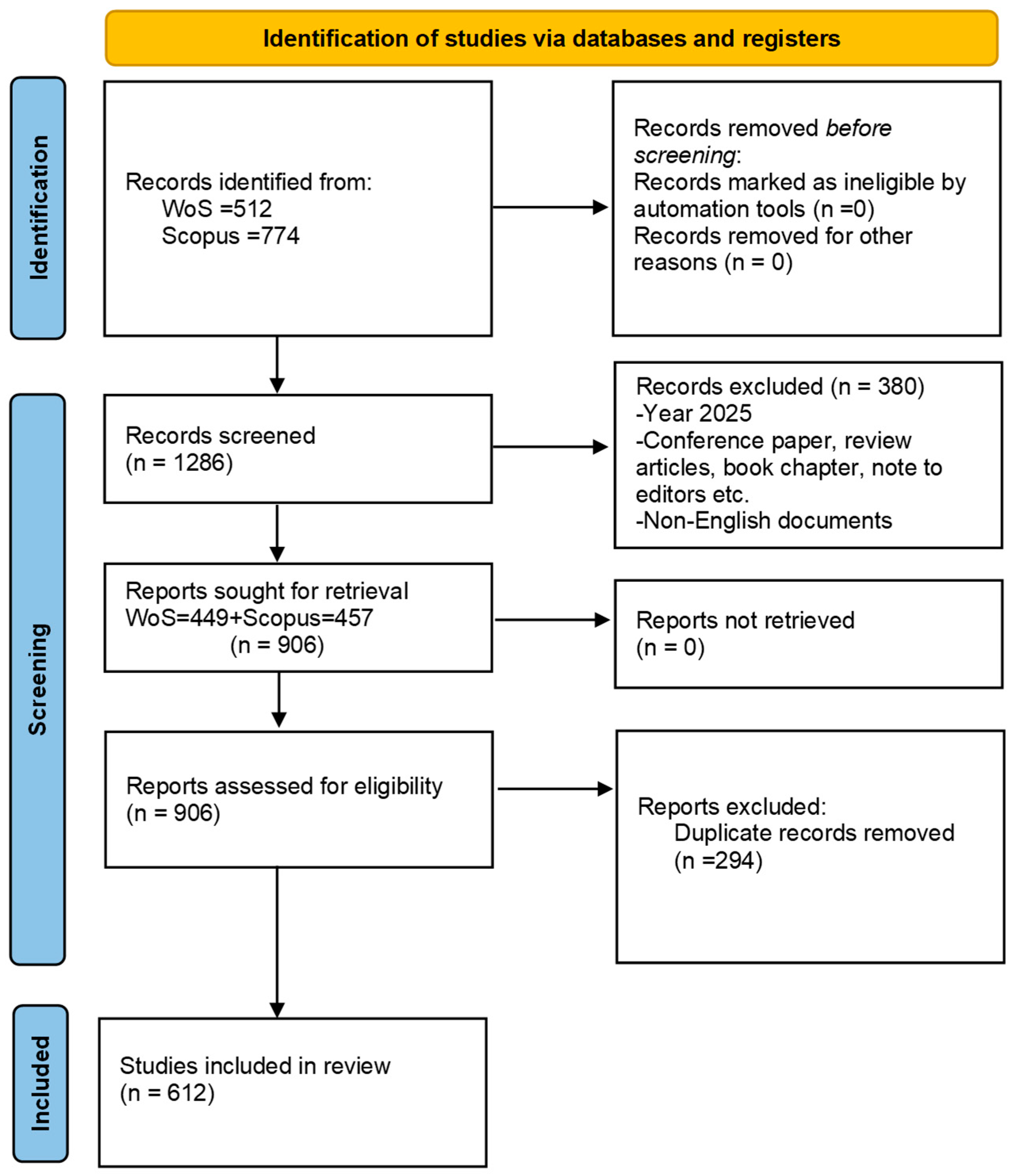
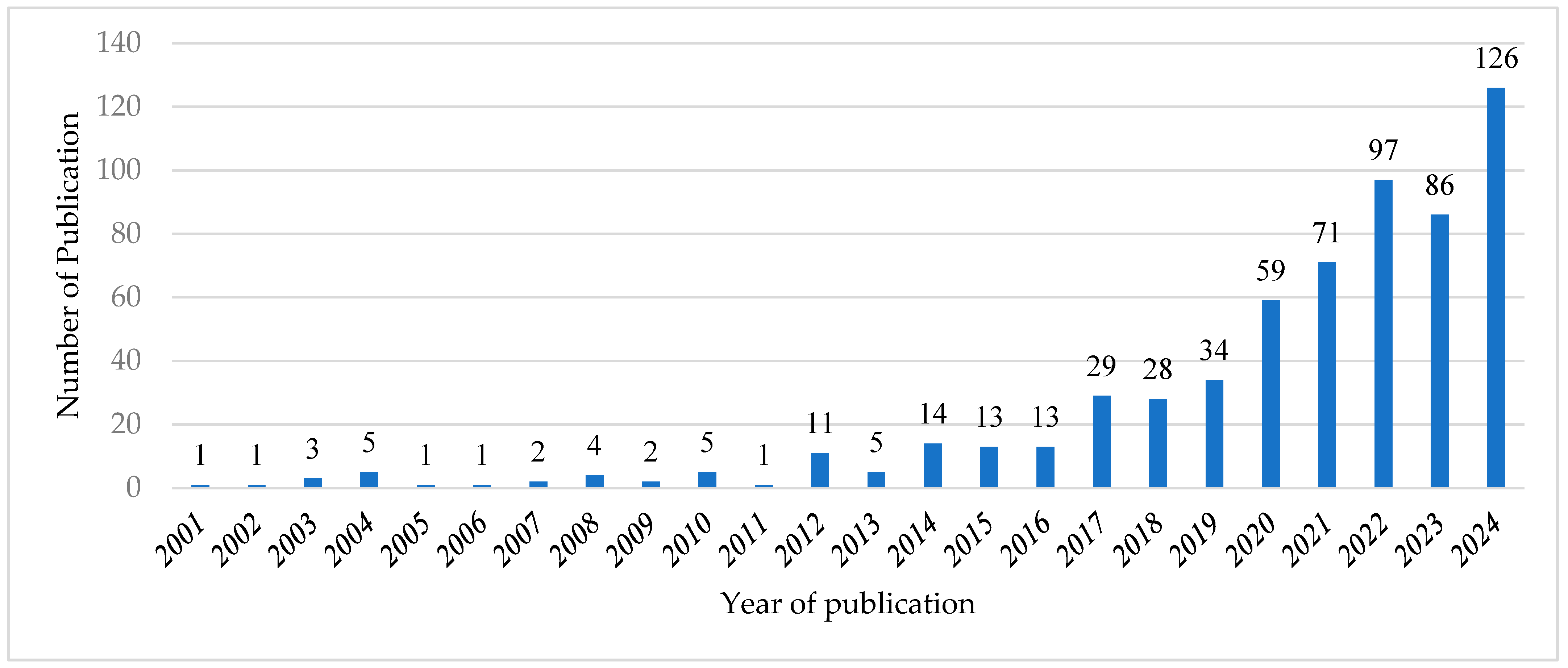
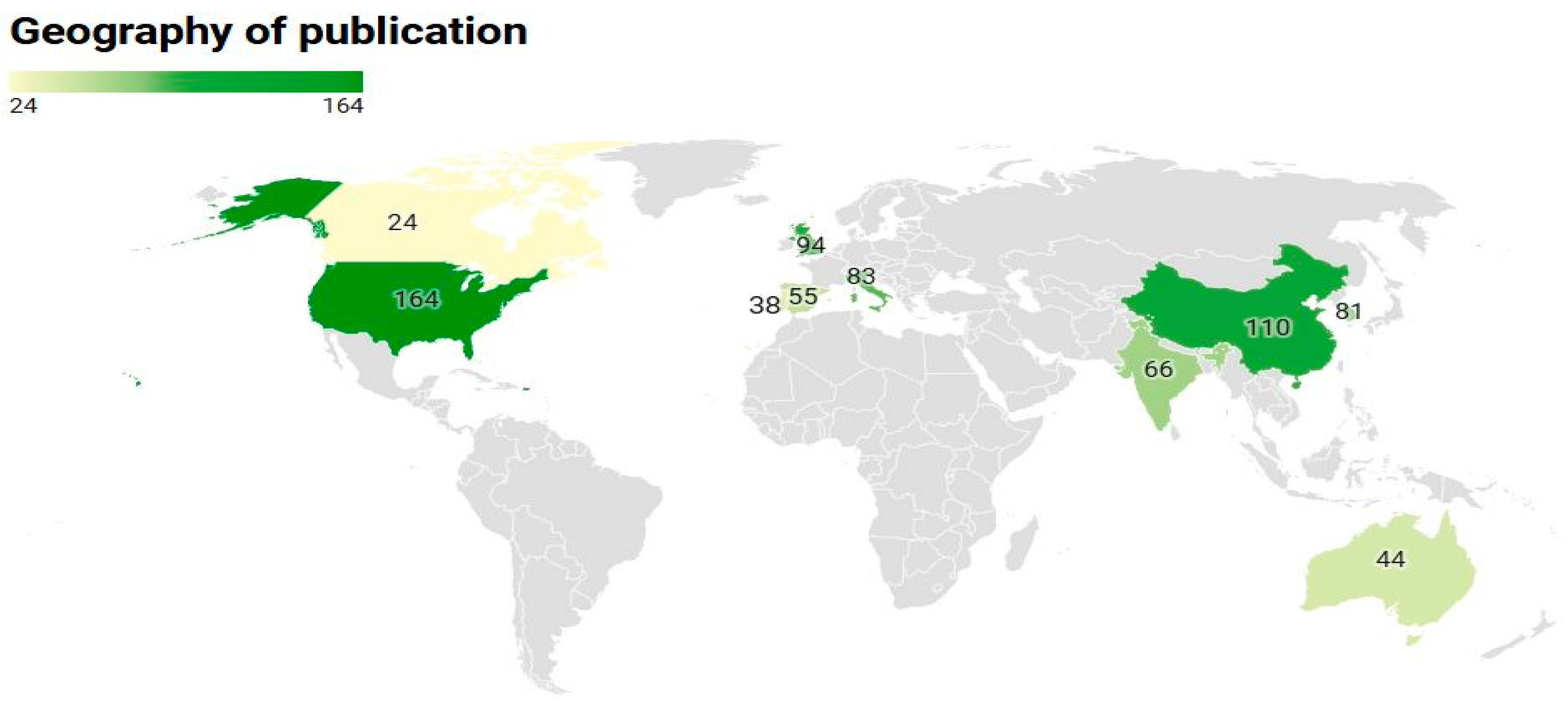


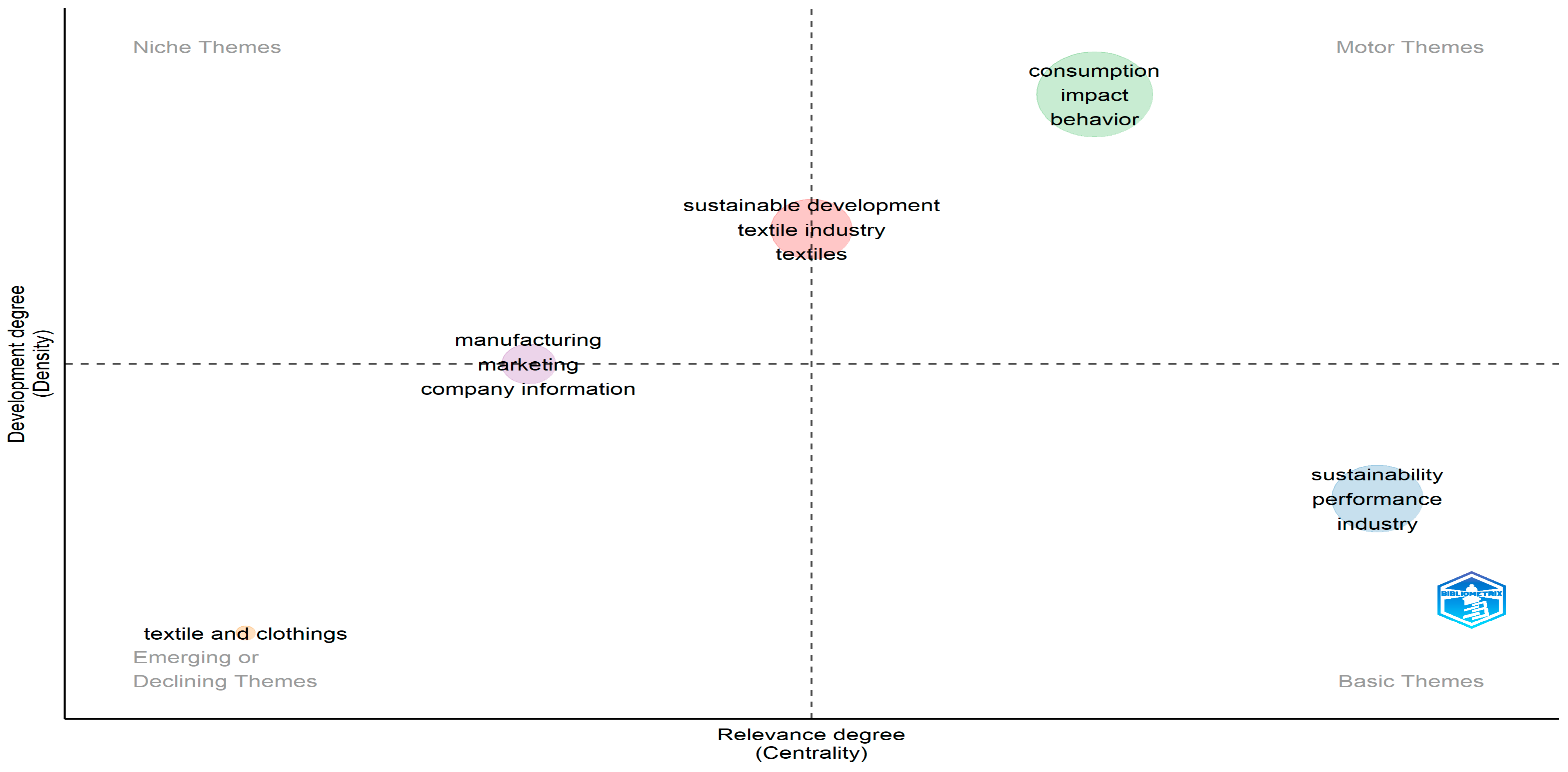


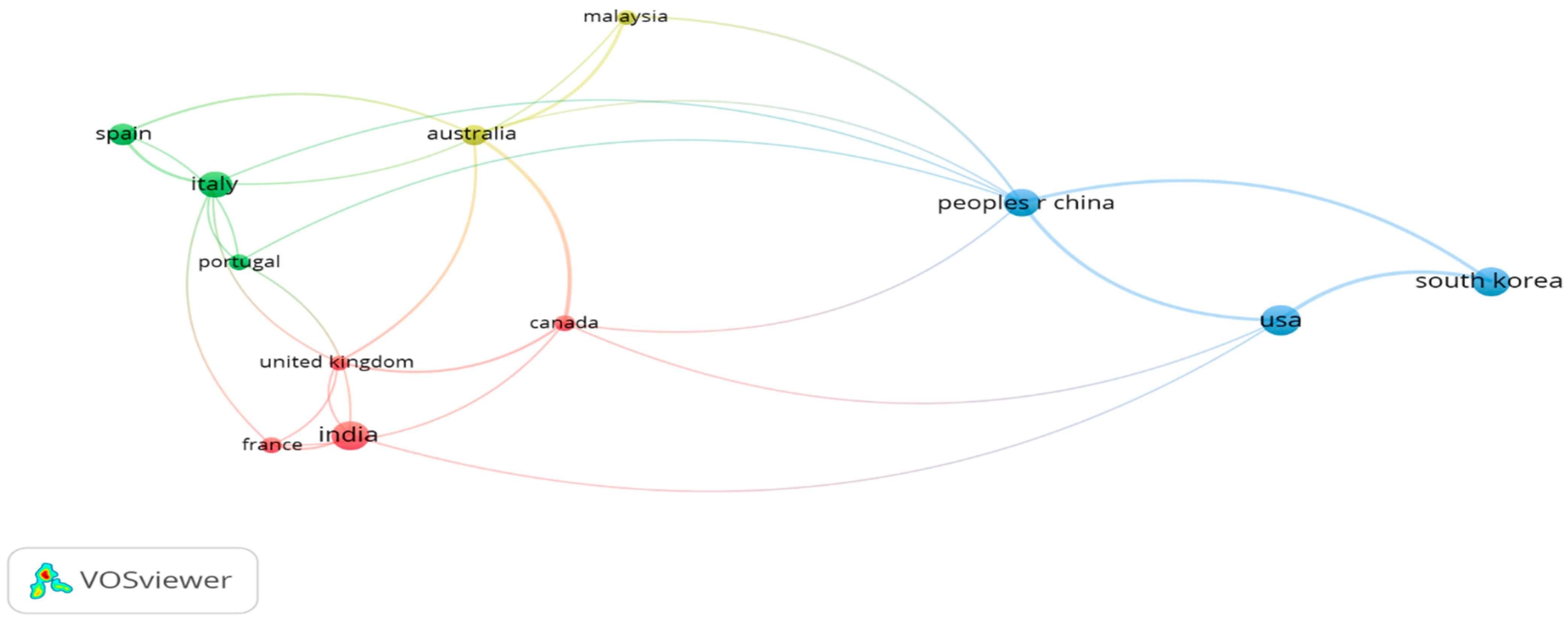


| Source | Scope of the Review | Sample Articles | Time Period | Type of Study |
|---|---|---|---|---|
| Abbate et al. (2023b) | This study examines consumer behavior regarding sustainable clothing, circular economy initiatives, and sustainability challenges throughout the supply chain. It also identifies the drivers and barriers to implementing corporate social responsibility (CSR) and circular economy practices. | 178 | 2000–2020 | Systematic literature review and bibliometric analysis |
| Adamkiewicz et al. (2022) | This review identifies the challenges of implementing a more sustainable circular economy in design aimed at recycling, minimizing by-products, reducing energy consumption, and encouraging responsible purchasing habits. The findings inform fashion brands about the risks and benefits associated with greenwashing practices and sustainable fashion industry. | 38 | 2019–2022 | Systematic literature review |
| Cui and Shaari (2023) | This research analyzes the current situation and development direction between consumers and the sustainable behavior of the textile industry. | 1010 | 2014–2023 | Scientometric review |
| Islam et al. (2021) | The diversity and complexity of environmental practices across different manufacturing processes are demonstrated in this review, which also develops a conceptual framework that directs the environmental analysis of sustainable practices in the textile, apparel, and fashion (TAF) industries. According to the study, few studies have been conducted in developing countries where most TAF production occurs, and a few studies have been discussed on the upstream steps of clothing washing and dyeing, as well as the production of trims, accessories, and packaging. | 91 | January 2010–June 2020 | Systematic literature review and bibliometric analysis |
| Karaosman et al. (2016) | This article shows variation in the distribution of social and environmental sustainability practices found in earlier studies. | 38 | 2006–2016 | Systematic literature review |
| Kemi and Zilahy (2023) | The study gives an overview of the literature on consumer behavior toward green fashion goods, which also identifies the most important obstacles and spotlights important motivators. | 104 | 2011–2021 | Systematic literature review |
| Luo et al. (2021) | This study examines methods for quantifying environmental sustainability, such as life cycle assessment, environmental footprint, eco-efficiency, and the Higg Index. It discusses the methodological limitations in the particular setting of the clothing and textiles sector. | 56 | 2016–2020 | Systematic literature review |
| Nascimento and Loureiro (2024) | Finding influential authors and journals, as well as current and developing issues, theories, methodologies, contexts, and future research directions, are all part of the bibliometric review’s description of the intellectual framework and dynamics of the sustainable branding discipline. Corporate branding and reputation, sustainable company development, ethical consumerism and sustainable branding, CSR, brand equity and green marketing, and sustainability branding in hotel tourism are the six clusters identified by the study. | 1509 | January 2001 and May 2023 | Bibliometric analysis |
| Prado et al. (2022) | This article explores recent scientific advancements in sustainability within the fashion retail sector. In addition to identifying the primary obstacles, advantages, and new trends for this industry in the near future, it covers a wide range of topics pertaining to fashion retail, such as slow fashion, fast fashion, supply chain sustainability, and the sustainable production and consumption of textile products. | 93 | 2009–2021 | Bibliometric analysis |
| Ruslan et al. (2023) | This study highlights the knowledge structure, development, and research trends in this area while illuminating the intricate dynamics that characterize sustainable consumer behavior within this particular setting. | 90 | 2015–2023 | Bibliometric analysis |
| Thorisdottir and Johannsdottir (2020) | The impact of CSR on sustainability in the fashion sector is assessed in this review. With commitments made for the economy, environment, and/or society, the CSR strategy is centered on sustainability, business models, and/or supply chain innovation. The manufacturing of eco-friendly products and worker safety are prioritized. | 209 | 2003–2019 | Systematic literature review |
| Vesterinen and Syrjälä (2022) | This study aims to develop a relational framework for the ideas surrounding the consumption cycle and anti-consumption of apparel from the environmental sustainability standpoint. It gives consumers more precise instructions on how to change their behavior and helps businesses create business models that detach usage from the negative implications of consuming. | 58 | No limit until June 2020 | Systematic literature review |
| C. L. White et al. (2017) | This study investigates the “discursive polyphony” and uncertainty among consumers that may be addressed by strategic communication management, even in the face of mounting stakeholder demand on clothing companies to embrace CSR and engage with stakeholders over CSR. | 73 | No limit–2015 | Bibliometric analysis |
| Wu et al. (2022) | This bibliometric review offers a knowledge roadmap for the textile and apparel sector’s sustainable growth, evaluating its present practices and research while offering useful references for academics and those outside the business. | 863 | 1987–2019 | Scientometric analysis |
| Yang et al. (2017) | The primary viewpoints of this study emphasize sustainable retailing in the fashion industry, emphasizing that the most important areas of the field include eco-labeling, green branding, fast fashion, slow fashion, disposable fashion, reverse logistics in fashion retailing, and new retail opportunities in e-commerce. | 48 | 2000–2016 | Systematic literature review |
| Our paper | This bibliometric review explores to identify influential authors and affiliations, journals, productive and cited countries, emerging and recent themes, and future research directions focusing on the dynamics of clothing brands’ sustainability practices. Our study expands the literature on clothing brands’ sustainability practices and evaluates clothing brands’ interventions to achieve sustainable development goals (SGDs). | 612 | 2001–2024 | Bibliometric literature review |
| Keywords | (“brand*”) AND (“sustainab*”) AND (“cloth*” OR “clothing*” OR “apparel*” OR “garment” OR “fashion*”) AND (“environment*” OR “economic*” OR “social”) | |
|---|---|---|
| Database | Web of Science | Scopus |
| Criteria | Inclusion | Exclusion |
| Years | Up to 2024 | Year 2025 |
| Types of documents | Articles only | Conference paper, review articles, book chapter, note to editors etc. |
| Language | English only | Non-English documents |
| Description | Results |
|---|---|
| Timespan | 2001:2024 |
| Sources (Journals) | 264 |
| Documents | 612 |
| Annual Growth Rate % | 23.4 |
| Document Average Age | 4.72 |
| Average citations per doc | 16.39 |
| References | 22,670 |
| DOCUMENT CONTENTS | |
| Keywords Plus (ID) | 1220 |
| Author’s Keywords (DE) | 1773 |
| AUTHORS | |
| Authors | 1357 |
| Authors of single-authored document | 80 |
| AUTHOR COLLABORATION | |
| Single-authored document | 126 |
| Co-Authors per document | 2.77 |
| International co-authorships % | 18.95 |
| Journal | Scimago Ranking | Impact Factor | Publisher | Articles |
|---|---|---|---|---|
| Sustainability | Q1 (0.67) | 3.3 | MDPI, Basel, Switzerland | 77 |
| Journal of Global Fashion Marketing | Q1 (0.89) | 3.3 | Taylor and Francis Ltd., London, United Kingdom | 25 |
| Journal of Fashion Marketing and Management | Q1 (0.91) | 3.2 | Emerald Group Publishing Ltd., Leeds, United Kingdom | 22 |
| Textile Outlook International | Q4 (0.1) | 0.02 | Textiles Intelligence Ltd., Cheshire, United Kingdom | 21 |
| Journal of Cleaner Production | Q1 (2.06) | 9.8 | Elsevier Ltd., London, United Kingdom | 18 |
| Performance Apparel Markets | Q4 (0.1) | 0.13 | Textiles Intelligence Ltd. | 14 |
| Journal of Retailing and Consumer Services | Q1 (2.99) | 11 | Elsevier Ltd., London, United Kingdom | 12 |
| Journal of Business Research | Q1 (3.13) | 10.5 | Elsevier Inc., New York City, United States | 10 |
| Journal of Product and Brand Management | Q1 (1.69) | 5.2 | Emerald Group Publishing Ltd., Leeds, United Kingdom | 10 |
| Asia Pacific Journal of Marketing and Logistics | Q1 (0.96) | 3.9 | Emerald Group Publishing Ltd., Leeds, United Kingdom | 7 |
| Country | Publication | Contribution (%) | Continent |
|---|---|---|---|
| United States of America | 164 | 27 | North America |
| China | 110 | 18 | Asia |
| United Kingdom | 94 | 15 | Europe |
| Italy | 83 | 14 | Europe |
| South Korea | 81 | 13 | Asia |
| India | 66 | 11 | Asia |
| Spain | 55 | 9 | Europe |
| Australia | 44 | 7 | Oceania |
| Portugal | 38 | 6 | Europe |
| Canada | 24 | 4 | North America |
| Authors | Articles | Articles Fractionalized |
|---|---|---|
| Ko E | 10 | 2.75 |
| Kim K | 8 | 2.33 |
| Lee S | 8 | 2.87 |
| Kim J | 7 | 2.33 |
| Kim S | 7 | 2.25 |
| Henninger C | 6 | 1.23 |
| Kim Y | 6 | 3.00 |
| Choi T | 5 | 1.62 |
| De A M | 5 | 1.50 |
| Kim N | 5 | 2.17 |
Disclaimer/Publisher’s Note: The statements, opinions and data contained in all publications are solely those of the individual author(s) and contributor(s) and not of MDPI and/or the editor(s). MDPI and/or the editor(s) disclaim responsibility for any injury to people or property resulting from any ideas, methods, instructions or products referred to in the content. |
© 2025 by the authors. Licensee MDPI, Basel, Switzerland. This article is an open access article distributed under the terms and conditions of the Creative Commons Attribution (CC BY) license (https://creativecommons.org/licenses/by/4.0/).
Share and Cite
Hasan, M.A.; Talukder, S.C.; Lakner, Z.; Temesi, Á. Clothing Brands’ Sustainability Practices: A Bibliometric Approach. Adm. Sci. 2025, 15, 221. https://doi.org/10.3390/admsci15060221
Hasan MA, Talukder SC, Lakner Z, Temesi Á. Clothing Brands’ Sustainability Practices: A Bibliometric Approach. Administrative Sciences. 2025; 15(6):221. https://doi.org/10.3390/admsci15060221
Chicago/Turabian StyleHasan, Md Abu, Saurav Chandra Talukder, Zoltán Lakner, and Ágoston Temesi. 2025. "Clothing Brands’ Sustainability Practices: A Bibliometric Approach" Administrative Sciences 15, no. 6: 221. https://doi.org/10.3390/admsci15060221
APA StyleHasan, M. A., Talukder, S. C., Lakner, Z., & Temesi, Á. (2025). Clothing Brands’ Sustainability Practices: A Bibliometric Approach. Administrative Sciences, 15(6), 221. https://doi.org/10.3390/admsci15060221








